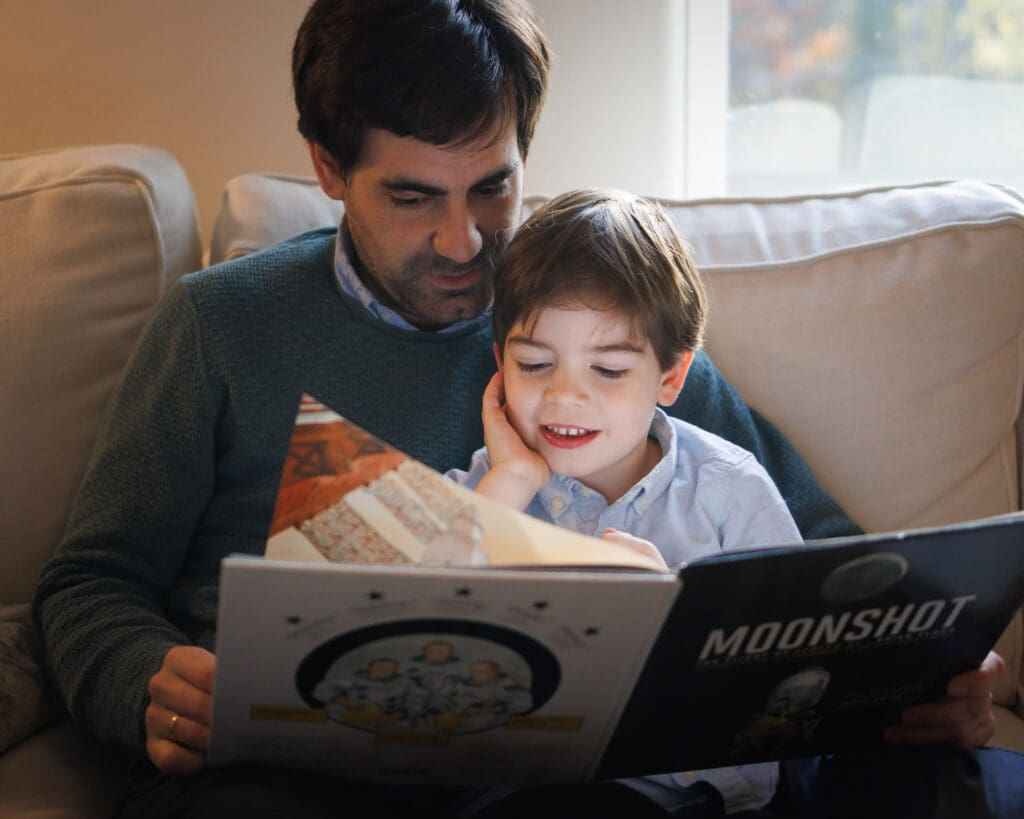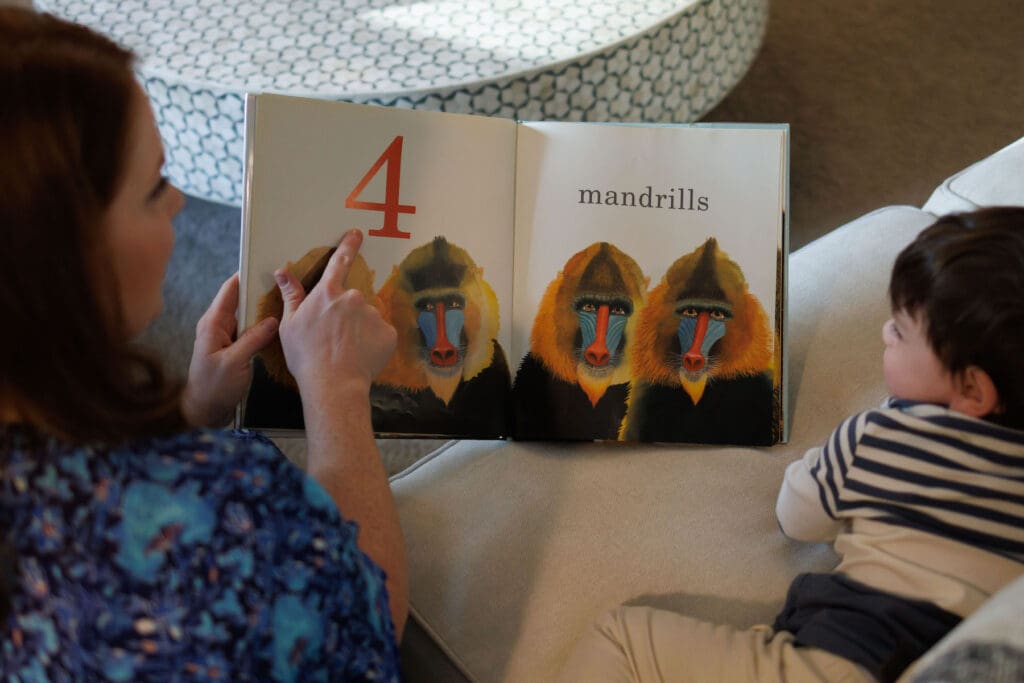For Julia Holcomb and Javier Sanz and their two young sons, reading is all about connection: to each other, to extended family, and to places, ideas, and interests.
Julia and Javier read to Alex, 4, and Jack, 2, regularly in both English and Spanish, which is Javier’s first language.
“I think what really defines our household is that duality of language,” Javier said. “Every minute I’m at home, I’ll speak only Spanish, and that involves reading, or any activities. And then Julia, as an English native speaker, she does the English part of it.”
Javier has family in Spain, and said teaching his children Spanish is a way to help them build strong bonds with those family members and their culture.
“It really expands their knowledge and their ability to communicate with the world,” he said. “With family in Spain, I want them to be able to communicate with them, to get to know them. And the fact that they’re so young, they just absorb language. It’s magical. It happens naturally for them. I see it as a great adventure for them that they can do it from such a young age.”
Reading is a regular part of their family’s routine, and has a big role in teaching Alex and Jack both languages, expanding their vocabularies and opening up more of the world to them.
“To them it’s not like learning a foreign language,” Julia said. “It’s just what happens at home. Alex goes to Charlotte Bilingual Preschool, so they’ll do one day in English and one day in Spanish. They also send home four books every week: two in Spanish and two in English. I’ll read the English ones to everybody, and then Javier will read the Spanish ones.”

The family also gets books from the library each week, so that the boys can pick ones specific to their interests. Julia and Javier then look for opportunities to connect what they read to real life, whether it’s pointing out a country on the map in their living room, or bringing home a new food from the grocery store.
All those little moments have a big payoff, Julia said.
“It can be hard, especially when they’re so little, and you’re reading the same book 50 times a day, and you’re like, ‘He can’t even talk. Is he getting anything out of this?’ And then, one day, he’ll just repeat something from it, or draw something from it, and you’re like, ‘OK, he’s been getting it all this time,’” she said. “That moment is very fulfilling.”
Seeing his sons’ progress inspired Javier to create a website for other families interested in teaching their children to read in Spanish: leyendojuntos.com. It’s designed to be used for a few minutes each day, with levels that build from simple words to full sentences.
“I think every minute makes them better,” he said. “Every minute makes them more capable, eventually. Whether it’s the two of us together, or the four of us together, any time you spend reading makes you better, I think.”

It’s also quality time, and something that feels affirming for them as parents.
“You just know it’s not only good for them, but it’s good for you, and it kind of makes you feel like a good parent,” Julia said. “You know that that’s something that you should be doing, and you are doing it, and they enjoy it. That’s a win.”
Javier echoed that sentiment: “To me, I think it’s happiness. It really makes me happy seeing that they’re actually learning. It’s just amazing. They’re so young, and they learn so quickly, and you can tell it’s because – a big part of it’s because of reading. You know, as adults, we typically think about, ‘I want to have a bigger house, or I want to have a better job, or I want to do this or that, or travel,’ when this experience I have with the children is what really fulfills me.”

